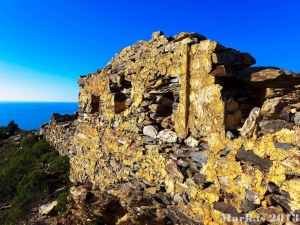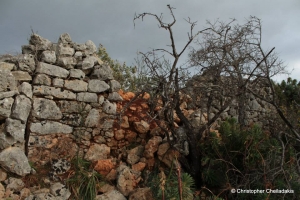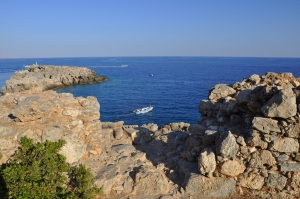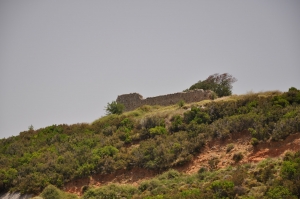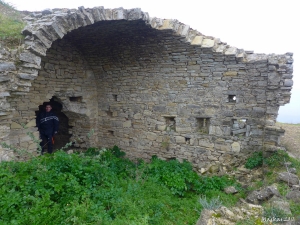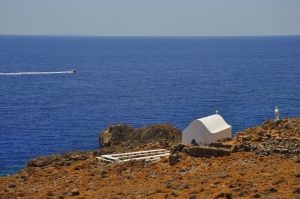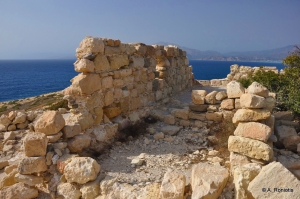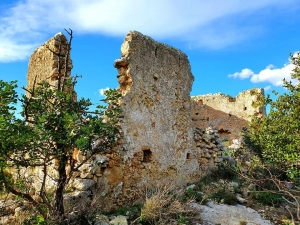The koules (tower) of Kokkinos Pirgos (Red Tower) is located close to Fodele. It is one of the three seaside Turkish towers built at this position. Although looks close, it is very hard to reach the fort due to dense vegetation and wires (for flocks).
One of the many koules (Turkish towers) built by the Turks in Crete that is completely unknown is that of Vamos. It is located atop Koules hill above the village of Vamos and is very hard to reach and identify. Almost nothing survives from this fort apart from the foundations and some scattered piles of stones that once formed part of the walls. The vegetation has covered the area and in some years there will be nothing visible from the fort of a bygone era.
Most visitors of Loutro know about the fortress of Koules, which even today dominates over the village.However, they are unaware of the existence of a second fortress which is very easily accessible. The fortress of Kastella is located south of the village and next to the harbor where the big ships from Chora Sfakion stop.
Just above the reservoir of the dam Potami still dominates the ruined Koules (Turkish Tower) of Potami, built in the period 1866 to 1869. It has been declared a protected monument, because it is an important sample of castle architecture and is inextricably linked to the history and memories of the area during the Ottoman occupation of Crete in the 19th century.
At an altitude of 705m, between the village Ano Moulia and the ruined village of Raftis, at a point that controls the valley of Messara, in 1866, Avni Pasha built a large Koules for controlling the passage to Messara and to protect Raftis, which was a Muslim village.
Between Loutro Sfakion and the famous beach of Glyka Nera, at Perlovakia, we meet the white brushed chapel of the Holy Cross (Timios Stavros) where a big feast takes place on September 14th every year.
Koules of Matala is located on the hill Kastri above the famous beach of Matala. The access is very easy, as its very close to the path that heads to the Red Beach.
The koule of Kalonyktis is located on the hill of Agiasmatsi on the outskirts of the village of Kalonyktis in the province of Rethymno. This large tower was built by the Ottomans after the Great Cretan Revolution of 1866, being part of the large network of towers - koules - for the control of the Cretan revolutionaries.











